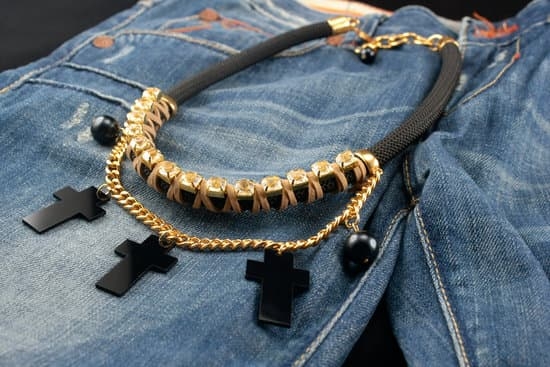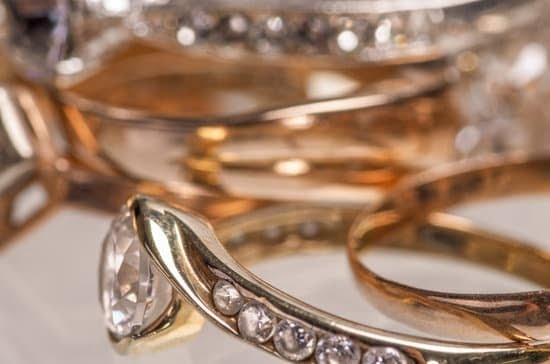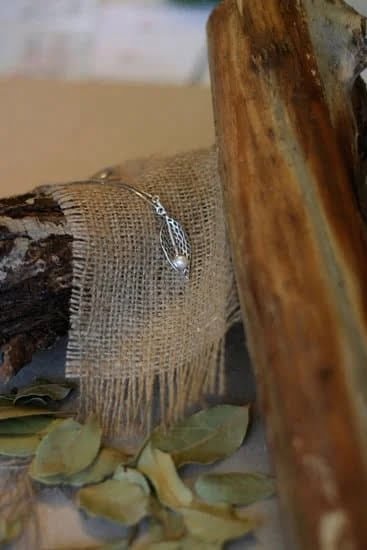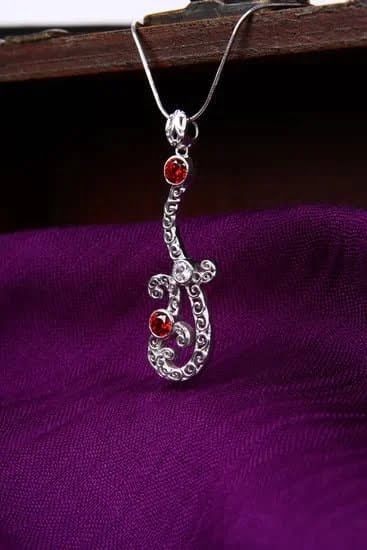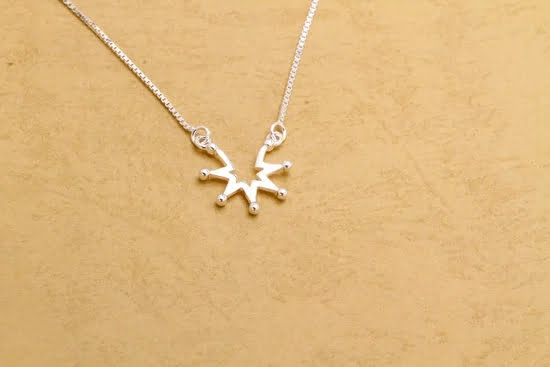Cleaning jewelry is not only essential for maintaining its shine and beauty but also for preserving its value and longevity. Over time, dirt, oils, and other substances can build up on your favorite pieces, causing them to appear dull and lifeless. By regularly cleaning your jewelry at home DIY, you can restore its brilliance and keep it looking as good as new.
One of the major benefits of cleaning jewelry at home is the convenience it offers. Instead of having to rely on professional cleaners or taking your pieces to a jeweler, you can easily tackle this task in the comfort of your own home. Not only does this save you time and money, but it also allows you to have complete control over the cleaning process.
Another advantage of DIY jewelry cleaning is that it enables you to take better care of different types of jewelry materials. From gold to silver and gemstones, each material has specific cleaning requirements that need to be considered. By understanding these requirements and using appropriate techniques, you can effectively clean your jewelry without harming or damaging it.
In the following sections, we will discuss the various types of jewelry materials and their specific cleaning needs. We will also provide step-by-step guides for cleaning gold jewelry, silver jewelry, and gemstone jewelry, as well as share tips for maintaining delicate pieces. By the end of this article, you will feel confident in your ability to keep your precious jewels sparkling and radiant with DIY methods.
Understanding the different types of jewelry materials and their cleaning requirements
There are many types of materials used in jewelry, and it is important to understand the specific cleaning requirements for each type in order to properly care for them. Different materials may require different cleaning methods and solutions to maintain their beauty and prevent damage. In this section, we will explore the different types of jewelry materials and provide an overview of their cleaning requirements.
Gold Jewelry
Gold is a popular choice for jewelry due to its durability and timeless beauty. When cleaning gold jewelry at home, it is important to use mild soap or a gold jewelry cleaner specifically designed for this type of metal. Avoid using harsh chemicals or abrasive cleaners that can scratch or damage the gold. Gently scrub the jewelry with a soft-bristled toothbrush or cloth, paying extra attention to any intricate details or gemstones set in the piece.
Silver Jewelry
Silver jewelry may develop tarnish over time due to exposure to air and moisture. To restore its shine, there are several DIY methods you can try at home. One common method involves creating a paste from baking soda and water, applying it to the tarnished areas, and gently rubbing it with a soft cloth or toothbrush. Rinse thoroughly and dry with a clean cloth afterwards.
Gemstone Jewelry
Gemstone jewelry can be delicate and require special care when cleaning. It is important to avoid using harsh chemicals or ultrasonic cleaners that can damage certain gemstones. Instead, use lukewarm water with a small amount of mild detergent or gentle soap to clean gemstone jewelry. Gently scrub with a soft brush or cloth, taking care not to scratch or damage the stones.
It is always recommended to check with the jeweler or consult specific care instructions provided by the manufacturer when cleaning precious gemstone jewelry as certain stones may have unique requirements.
Understanding the specific cleaning needs of different types of jewelry materials is key to maintaining their beauty and longevity. Taking the time to properly clean and care for your jewelry at home will help preserve its value and ensure that you can continue to enjoy wearing it for years to come.
Gathering the necessary materials and tools for jewelry cleaning DIY
To effectively clean jewelry at home, it is important to gather the necessary materials and tools before starting the process. Having the right supplies will ensure that you can properly care for your jewelry without causing any damage. Here are some essential items you will need for DIY jewelry cleaning:
- Mild Dish Soap: Choose a gentle dish soap that does not contain harsh chemicals or additives. This will be used to create a cleaning solution for your jewelry.
- Soft Brushes: Use soft-bristled brushes, such as a toothbrush or a small makeup brush, to gently scrub away dirt and grime from your jewelry. Avoid using abrasive materials that can scratch delicate surfaces.
- Microfiber Cloth: A microfiber cloth is ideal for drying and polishing your jewelry after cleaning. It is soft and lint-free, preventing any scratches or residue on your precious pieces.
- Toothpicks or Q-tips: These small tools are great for reaching tight spots and crevices in intricate jewelry designs where dirt and debris tend to accumulate.
- Jewelry Cleaner Solution (optional): If you prefer using a specialized cleaner, choose one that is suitable for the type of jewelry you have. Be sure to follow the instructions provided by the manufacturer.
- Ultrasonic Cleaner (optional): An ultrasonic cleaner uses sound waves to agitate the cleaning solution and remove dirt from hard-to-reach areas of your jewelry. While it is not necessary, it can provide an extra level of cleanliness.
- Soft Bristle Toothbrush: A toothbrush with soft bristles can be used to gently scrub away dirt or grime from hard-to-reach areas of your jewelry.
It is important to note that different types of jewelry may require specific cleaning methods or additional tools, such as polishing cloths or silver dips for silver pieces. Always research the appropriate cleaning techniques for each material before proceeding.
By gathering these essential materials and tools, you will be well-equipped to clean your jewelry effectively and safely at home. Remember to handle your jewelry with care and follow the proper techniques outlined in the subsequent sections for specific materials like gold, silver, and gemstones.
Step-by-step guide on cleaning gold jewelry at home
Gold jewelry is a cherished possession for many people, and regular cleaning is essential to maintain its beauty and shine. Cleaning gold jewelry at home can be done easily with some effective and safe techniques. Here is a step-by-step guide to help you clean your gold jewelry effectively:
Gather the necessary materials
Before you begin cleaning your gold jewelry, make sure you have all the necessary materials and tools on hand. You will need mild dish soap or jewelry cleaner specifically designed for gold, a soft-bristled toothbrush, a lint-free cloth or microfiber cloth, a bowl of warm water, and a soft towel.
Soak the jewelry in warm soapy water
Start by filling a small bowl with warm water and adding a few drops of mild dish soap or gold-specific jewelry cleaner. Stir gently to create some suds. Place your gold jewelry into the bowl and let it soak for about 15-20 minutes. This will help loosen any dirt or residue.
Clean with a soft bristle toothbrush
After soaking, take the gold jewelry out of the soapy water and use a soft-bristled toothbrush to gently scrub any remaining dirt. Be careful not to scrub too hard as it may scratch delicate gemstones or settings. Pay extra attention to crevices or intricate designs where dirt may accumulate.
Rinse and pat dry
Once you have finished scrubbing, rinse off the soap residue with clean water. Make sure all traces of soap are removed as it can leave behind residues that dull the shine of your gold jewelry. After rinsing, pat dry your gold jewelry using a clean towel or allow it to air dry on a soft surface.
Cleaning your gold jewelry regularly using these simple techniques will help keep it looking lustrous and beautiful for years to come. Remember to store your cleaned jewelry in a cool and dry place, away from direct sunlight and humidity, to prevent tarnishing.
How to clean silver jewelry at home
Silver jewelry is a popular choice among many individuals due to its versatility and classic look. However, over time, silver jewelry can become tarnished and lose its shine. Fortunately, there are several DIY methods that can effectively restore the luster of silver jewelry and remove tarnish.
One common method for cleaning silver jewelry at home is by using baking soda and aluminum foil. First, create a mixture of one tablespoon of baking soda and one cup of hot water in a bowl. Then, line a bowl with aluminum foil and place your silver jewelry on top of it.
Pour the baking soda mixture over the jewelry, making sure it is fully submerged. Let it sit for about 10 minutes, allowing the chemical reaction between the baking soda, aluminum foil, and tarnish to occur. Finally, rinse the jewelry with water and dry it with a soft cloth.
Another effective DIY method for cleaning silver jewelry is using toothpaste. Apply a small amount of toothpaste (without any whitening agents or abrasive particles) onto a soft cloth or toothbrush. Gently scrub the jewelry in circular motions, paying extra attention to areas with tarnish. Rinse off the toothpaste residue with water and dry the jewelry thoroughly.
If your silver jewelry has intricate or hard-to-reach areas that are difficult to clean with traditional methods, you can try using a silver cleaning dip or polish specifically designed for removing tarnish from silver. These products are typically applied by dipping or brushing onto the jewelry and then rinsed off with water.
Regardless of which DIY method you choose to clean your silver jewelry at home, it’s important to remember some best practices:
- Handle your silver jewelry with clean hands to avoid transferring oils or dirt onto the surface.
- Use a soft cloth or non-abrasive brush to gently clean your jewelry.
- Avoid harsh chemicals that could damage or discolor your jewelry.
- After cleaning, store your silver jewelry in an airtight container or a soft pouch to prevent tarnishing and scratches.
By following these DIY methods and best practices, you can restore the shine of your silver jewelry at home and maintain its beauty for years to come.
DIY cleaning techniques for removing dirt and fingerprints from gemstone jewelry
Gemstone jewelry is not only beautiful, but it also holds significant value for many people. To keep your gemstone jewelry looking its best, it’s important to regularly clean and maintain it. Dirt and fingerprints can easily accumulate on gemstones, dulling their sparkle and beauty. Fortunately, there are DIY cleaning techniques that you can use to remove dirt and fingerprints from gemstone jewelry at home.
Before you begin cleaning your gemstone jewelry, it’s necessary to gather the necessary materials and tools. You will need a mild dish soap, warm water, a soft-bristle toothbrush or a dedicated jewelry cleaning brush, a lint-free cloth or microfiber cloth, and a bowl or container for mixing the cleaning solution. It’s also important to consider the type of gemstone you are working with as different gemstones have varying degrees of hardness and may require special care.
To clean gemstone jewelry at home, start by preparing a cleaning solution using warm water and a few drops of mild dish soap. Gently mix the solution until it becomes sudsy. Then place your gemstone jewelry in the solution and let it soak for about 10-15 minutes. This will help loosen any dirt or residue that has accumulated.
After soaking, use a soft-bristle toothbrush or a dedicated jewelry cleaning brush to gently scrub the surface of the gemstones. Be sure to pay attention to areas where dirt or fingerprints may be more prominent, such as behind prongs or along the edges of the setting. Use gentle circular motions while scrubbing but avoid applying too much pressure as this may damage delicate stones.
Once you have thoroughly cleaned your gemstone jewelry with the brush, rinse it under warm running water to remove any remaining soap residue. Take caution when rinsing near drains to prevent accidental loss of small stones down the drain. Finally, pat dry your jewelry using a lint-free cloth or microfiber cloth. Avoid rubbing too vigorously as this can cause scratches on the surface of the gemstones.
Regularly cleaning your gemstone jewelry using these DIY techniques will help to restore its shine and luster, allowing you to enjoy its beauty for years to come. Remember to also follow best practices for cleaning delicate and intricate jewelry pieces, as well as essential safety precautions, to ensure that your gemstone jewelry is cared for properly.
Best practices for cleaning delicate and intricate jewelry pieces at home
Delicate and intricate jewelry pieces require special care when it comes to cleaning. These pieces are often made with fragile materials or have complex designs that can be easily damaged or altered if not cleaned properly. Follow these best practices to ensure the safe and effective cleaning of your delicate and intricate jewelry.
Firstly, it is crucial to identify the specific type of material used in your jewelry piece. Delicate and intricate jewelry can be made from a variety of materials such as pearls, opals, enamel, or even antique metals. Each material requires specific cleaning methods to prevent any damage.
For example, pearls should never be submerged in water or cleaned with harsh chemicals, as this can cause them to lose their luster or become discolored. Instead, use a soft cloth slightly dampened with lukewarm water to gently wipe the pearls clean.
When dealing with intricate designs or settings, such as filigree work or pave detailing, it is essential to exercise caution during the cleaning process. These details are often delicate and can easily bend or break if handled roughly. Instead of using a brush or abrasive cloth, opt for a soft bristle toothbrush or a cotton swab dipped in soapy water to carefully clean around these areas. Pay close attention to any nooks and crannies where dirt and grime may gather.
Another important practice is to remove any loose stones before attempting to clean delicate jewelry. Stones that are not firmly set may become dislodged during the cleaning process, causing further damage or loss. Carefully inspect each stone setting before beginning the cleaning process and secure any loose stones using jeweler’s glue if necessary.
In addition to following these best practices for cleaning delicate and intricate jewelry at home, it is always recommended to consult with a professional jeweler for guidance on specific pieces that may require extra care. They can provide expert advice tailored to your unique jewelry and help ensure that your precious pieces remain beautiful and undamaged for years to come.
Tips and tricks for maintaining and storing jewelry to prevent tarnishing and damage
One of the most important aspects of owning jewelry is properly maintaining and storing it to prevent tarnishing and damage. By following these tips and tricks, you can ensure that your precious pieces last a lifetime:
- Keep jewelry away from moisture: Moisture can lead to tarnishing, so it’s important to keep your jewelry dry. Be sure to remove any jewelry before swimming, showering, or doing household chores that involve water.
- Store jewelry in separate compartments: To prevent scratching and tangling, store each piece of jewelry in separate compartments or pouches. This will help maintain their shine and prevent any accidental damage.
- Clean before storing: Before putting your jewelry away for storage, make sure to clean it properly. This helps remove any dirt or oils that may have accumulated on the surface during wear.
- Use anti-tarnish strips: Another great way to prevent tarnishing is by using anti-tarnish strips or tabs in your jewelry storage containers. These strips absorb moisture and pollutants that cause tarnish, keeping your jewelry looking its best.
- Avoid exposure to chemicals: Chemicals found in household cleaners, hairsprays, perfumes, and even certain lotions can damage your jewelry. Be mindful of what products come into contact with your pieces and try to avoid direct exposure.
- Regularly inspect and restring beaded jewelry: For those who own beaded necklaces or bracelets, it’s important to regularly inspect the stringing material for any signs of wear or fraying. If you notice any issues, have it restringed as soon as possible to prevent breakage and loss of beads.
By following these simple tips for maintaining and storing your jewelry properly, you can ensure that it remains in excellent condition for years to come. Taking good care of your pieces not only keeps them looking beautiful but also preserves their value over time.
Essential safety precautions to follow when cleaning jewelry at home DIY
When it comes to cleaning jewelry at home DIY, it is important to prioritize safety to prevent any damage or harm. Here are some essential safety precautions to keep in mind:
- Read and follow instructions: Before starting the cleaning process, carefully read any instructions or guidelines provided by the manufacturer or jeweler. Different types of jewelry may require specific cleaning techniques or solutions, so it is crucial to understand and adhere to these instructions.
- Use a suitable workspace: Find a clean and well-lit area where you can work comfortably. Avoid working near any sinks or drains to prevent accidentally dropping your jewelry down the drain. It is also recommended to use a soft cloth or tray on your workspace to catch any loose pieces or particles.
- Use appropriate tools and materials: Make sure you have all the necessary tools and materials for cleaning your jewelry before you begin. It is advisable to use soft brushes, lint-free cloths, and specially formulated jewelry cleaners that are safe for the specific type of metal or gemstone in your jewelry.
- Test a small area first: If you are using a new cleaning solution or method on your jewelry, always test it on a small, inconspicuous area first before applying it to the entire piece. This will help you determine if there are any adverse reactions with the metal or gemstones.
- Take off delicate stones and fragile pieces: If your jewelry has delicate stones, pearls, or other fragile components, consider removing them before cleaning. These pieces may require extra care and can be prone to damage from harsh cleaning solutions or vigorous brushing.
- Avoid wearing gloves: While gloves may seem like a good idea for protecting your hands while handling chemicals, they can actually increase the risk of damaging your jewelry. They can easily catch on prongs, clasps, or other intricate detailing and cause bending or breakage.
- Rinse and dry thoroughly: After cleaning your jewelry, ensure that you rinse it thoroughly to remove any cleaning solution or residue. Use clean, warm water and pat dry with a soft cloth to avoid leaving any water spots.
By following these essential safety precautions, you can confidently clean your jewelry at home DIY and enjoy the beauty of your pieces for years to come. Remember to always prioritize the safety of yourself and your jewelry throughout the cleaning process.
Conclusion
In conclusion, cleaning jewelry at home can be a rewarding and empowering task. By understanding the different types of jewelry materials and their specific cleaning requirements, gathering the necessary tools, and following effective DIY techniques, readers can confidently clean their jewelry at home and preserve its beauty and value.
Regularly cleaning jewelry is important because it helps maintain its shine and luster. Whether it’s gold, silver, or gemstone jewelry, each material requires specific cleaning techniques to restore its brilliance.
With the step-by-step guides provided in this article, readers can safely clean their gold jewelry using household items such as mild soap and warm water. Similarly, silver jewelry can be restored to its original shine by using DIY methods like aluminum foil and baking soda paste to remove tarnish.
Furthermore, readers can learn how to remove dirt and fingerprints from gemstone jewelry by utilizing simple DIY techniques like using a soft toothbrush with mild soap solution or soaking the piece in lukewarm water with nonabrasive detergent. Additionally, best practices for cleaning delicate and intricate pieces are discussed to ensure that readers can safely handle such types of jewelry without causing any damage.
Finally, this article provides essential tips for maintaining and storing jewelry properly to prevent tarnishing and damage. By following these guidelines consistently, readers can confidently take care of their jewelry at home without resorting to professional cleaning services.
In summary, by empowering readers with knowledge about cleaning different types of materials, providing step-by-step guides for DIY methods on various kinds of jewelry pieces, as well as offering valuable tips for maintenance and storage practices – this article aims to enable readers to confidently clean their beloved pieces of jewelry at home while preserving their beauty and sentimental value.
Frequently Asked Questions
How do I make a homemade jewelry cleaner?
Making a homemade jewelry cleaner can be quite simple and effective. One common recipe involves mixing equal parts of mild dish soap and warm water in a bowl. Soak your jewelry in this solution for 15-20 minutes, gently scrubbing with a soft-bristled toothbrush to remove any dirt or grime. Afterward, rinse the jewelry under cool running water and pat dry with a clean, lint-free cloth.
Another homemade jewelry cleaner option is using a mixture of baking soda and water to make a paste. Apply this paste to your jewelry using a cloth or brush, then rinse and dry thoroughly. However, it’s important to note that not all types of jewelry may respond well to these cleaners, so remember to research before attempting any DIY methods.
Does hydrogen peroxide clean jewelry?
Yes, hydrogen peroxide can be used to clean certain types of jewelry effectively. It is particularly useful for cleaning silver jewelry that has become tarnished over time. To use hydrogen peroxide for cleaning purposes, first, ensure that your jewelry is made primarily of silver and does not contain any porous gemstones or pearls that could be damaged by the substance.
Simply pour some hydrogen peroxide into a small dish and submerge your tarnished silver pieces into it for about 10-15 minutes. After soaking, carefully remove the pieces from the solution and rinse them under cool water before drying them with a soft cloth.
Is there a natural way to clean jewelry?
If you prefer natural methods for cleaning your jewelry instead of using store-bought cleaners or chemicals, there are several options available that you can try at home. One natural method involves using white vinegar mixed with baking soda. Create a paste by combining equal parts of both ingredients then apply it to your jewelry using a soft cloth or brush; gently scrub away dirt or tarnish before rinsing with cool water and drying thoroughly.
Another option is using lemon juice as an acidic cleaning agent due to its natural citric acid content which can help remove tarnish. Soak your jewelry in lemon juice for a few minutes, then scrub gently with a soft brush before rinsing and drying. However, while natural methods can be beneficial, it’s important to note that certain gemstones, metals, or delicate pieces may require more specialized cleaning techniques, so always exercise caution and research specific recommendations for your jewelry.

Welcome to my jewelry blog! My name is Sarah and I am the owner of this blog.
I love making jewelry and sharing my creations with others.
So whether you’re someone who loves wearing jewelry yourself or simply enjoys learning about it, be sure to check out my blog for insightful posts on everything related to this exciting topic!

